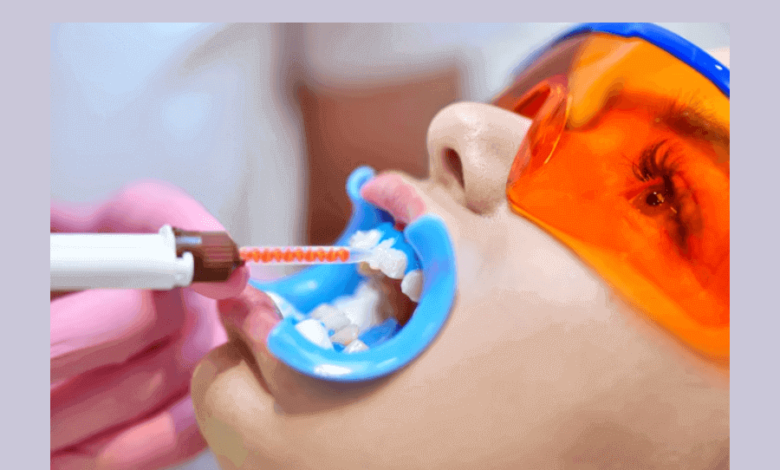Dental Sealants
Protecting Teeth from Decay
Dental sealants are a preventive dental treatment designed to protect the surfaces of teeth most susceptible to cavities, especially in the back molars and premolars. These thin, protective coatings act as a barrier to shield teeth from the damaging effects of plaque and acid. Here’s an overview of dental sealants:
1. Purpose of Dental Sealants:
-
- Cavity Prevention: Dental sealants are applied to the chewing surfaces of molars and premolars to prevent cavities.
- Sealing Fissures and Pits: The sealant material flows into the fissures and pits of the teeth, creating a smooth surface that is easier to clean.
2. Target Areas for Sealants:
- Molars and Premolars: Sealants are commonly applied to the permanent molars and premolars, which have deep fissures and are harder to clean with regular brushing.
3. Sealant Material:
-
- Resin Material: Most sealants are made of a clear or tooth-colored resin material.
- BPA-Free Options: Many sealants used in modern dentistry are BPA-free, addressing concerns about potential health risks associated with this compound.
4. Application Process:
-
- Cleaning and Preparation: The tooth surface is thoroughly cleaned, and an etching solution is applied to create a textured surface for better adherence.
- Sealant Application: The sealant material is carefully applied to the tooth’s surface, and a special light may be used to cure and harden the sealant.
- Evaluation: The dentist ensures that the sealant has properly bonded to the tooth and makes any necessary adjustments.
5. Timing of Sealant Application:
-
- Children and Adolescents: Sealants are often applied soon after the eruption of permanent molars and premolars, typically between the ages of 6 and 14.
- Adults: Sealants can also be applied to adult teeth, especially if the teeth are prone to cavities or have deep grooves.
6. Durability and Longevity:
-
- Durable Protection: Dental sealants can provide effective protection for several years.
- Regular Check-ups: The dentist monitors the condition of sealants during regular dental check-ups and may reapply them if necessary.
7. Benefits of Dental Sealants:
-
- Cavity Prevention: Sealants create a physical barrier that prevents food particles, bacteria, and acids from causing decay.
- Cost-Effective: Sealants are a cost-effective preventive measure compared to treating cavities.
8. Oral Hygiene and Diet:
-
- Regular Brushing and Flossing: While sealants offer protection, maintaining good oral hygiene practices is essential.
- Dietary Considerations: A healthy diet low in sugary foods further contributes to cavity prevention.
9. Considerations for Sealant Application:
-
- Individual Risk: Sealants may be recommended based on an individual’s risk of developing cavities.
- Personalized Treatment Plans: Dentists assess the specific needs of each patient and tailor sealant application accordingly.
Dental sealants are a valuable tool in preventing cavities, especially in the hard-to-reach areas of the molars and premolars. If you are considering sealants for yourself or your child, consult with your dentist to determine the most suitable preventive measures based on individual oral health needs.

